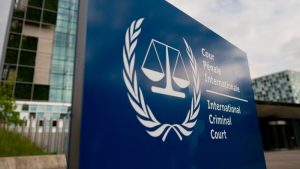Central Asians edge into a brave new world on Russia’s doorstep
Unlock the Editor’s Digest for free
Roula Khalaf, Editor of the FT, selects her favourite stories in this weekly newsletter.
A school classroom and a football press conference seem unlikely settings for diplomatic contretemps with Russia. But that is what has happened in Kazakhstan and Uzbekistan, the two largest countries of central Asia, a vast region once under the control of the tsarist and Soviet empires. The incidents underline the increasing willingness of central Asian states, since Moscow’s full-scale invasion of Ukraine in February 2022, to stand up for their interests and assert their identities.
In Tashkent, Uzbekistan’s capital, a teacher slapped and screamed at a pupil who complained that she was conducting her Russian-language class in Uzbek. After Russia’s foreign ministry spokesperson denounced the incident as “cruel treatment”, the deputy speaker of Uzbekistan’s parliament hit back by saying the Kremlin should mind its own business. Meanwhile, the Russian coach of Kazakhstan’s national football team has been fined for making disrespectful remarks at a news conference about the Kazakh language.
It is no accident that language was at the heart of these altercations. Although Russian is still a lingua franca in central Asia, each of the region’s five states is promoting its own language. Turkmenistan and Uzbekistan have substituted a modified Latin alphabet for the Cyrillic script that was imposed in Soviet times, and Kazakhstan is following suit.
No less significant is the desire to reclaim control over their modern history. October 27 marked the 100th anniversary of the proclamation of the Uzbek Soviet Socialist Republic as part of the USSR. But instead of paying tribute to the Russian hand in establishing the first modern Uzbek polity, the authorities are celebrating the role of Jadidism, a modernising Islamic reform movement that emerged in the late 19th century and was suppressed under Joseph Stalin’s dictatorship.
Slowly but surely, central Asian governments are lifting the veil of silence that hung for decades over Stalin’s repressions in the region. In September 2023, the Kazakh authorities declassified the archival records of 2.4mn victims of Stalinism. Even Tajikistan, the smallest central Asian state, is voicing complaints about Russia. Kokhir Rasulzoda, the Tajik prime minister, criticised “widespread violation of the fundamental rights and freedoms of our citizens” after mass deportations of Tajiks from Russia following a terrorist attack in March on a Moscow rock concert.
To be clear, no central Asian country is breaking, or even wants to break, decisively with Russia. Some are indirectly sustaining Vladimir Putin’s war of aggression in Ukraine by enabling Moscow to circumvent western sanctions and import goods useful for Russia’s militarised economy. Kyrgyzstan and Tajikistan host Russian military bases. It was only a month before Putin attacked Ukraine in 2022 that a Russian-led force entered Kazakhstan at the government’s request to help quell riots that killed more than 200 people.
Central Asia’s rulers are undoubtedly disturbed by Putin’s attempted annexation of large areas of Ukraine. But they do not permit their state-run television channels to air reports on sensitive matters such as Russian atrocities or, in August, the Ukrainian counter-invasion of Russian territory. In Turkmenistan, the most tightly controlled central Asian country, the state media has hardly mentioned Russia’s war at all since the 2022 invasion.
Beneath the surface, however, all central Asian states are exploring the opportunities that have arisen since the invasion to distance themselves from Russia. Partly because of the region’s raw materials and energy riches, the US and the EU are keen to encourage this trend — though they face competition from China, Turkey and Russia itself. Central Asia was something of a backwater during the cold war. It is anything but that now.
#Central #Asians #edge #brave #world #Russias #doorstep




